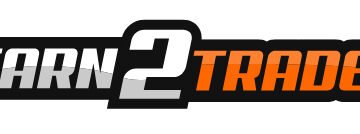Learn how professional day traders use the Initial Balance (IB) to maximize profits. Discover failed auction setups, trend continuation trades, and proven strategies for futures markets. Plus, grab your Prop Trading Evaluation Discount – 80% OFF Apex Trader Funding evaluations today!
Introduction
Day trading futures requires precision, structure, and a deep understanding of market behavior. One of the most powerful yet underutilized concepts is the Initial Balance (IB). Institutions, hedge funds, and banks use this method daily to establish their positions, and savvy traders can leverage it to gain an edge. This strategy tutorial will explain what the Initial Balance is, how to measure it, and the two most profitable setups traders can use.
For traders looking to trade with prop firms, this guide also includes an exclusive 80% OFF Apex Trader Funding discount – making it easier than ever to get funded and trade with institutional-level strategies.
What Is the Initial Balance (IB)?
The Initial Balance represents the first hour of the trading session. For the New York session, this means from 9:30 AM to 10:30 AM EST.
- Initial Balance High (IBH): The highest price reached in the first hour.
- Initial Balance Low (IBL): The lowest price reached in the first hour.
This range provides critical insight into market sentiment and institutional positioning. Inside the IB, price tends to chop and rotate. Outside the IB, price either expands into trend or fails to hold, creating high-probability setups.
Why the Initial Balance Matters
- Institutional Activity: The first hour of trading is when the most volume enters the market. Institutions build or close positions here.
- Market Structure: The IB defines balance versus imbalance conditions.
- Liquidity Pools: Stops are built inside the IB. Once broken, liquidity is used to fuel expansions.
The Two Key Trade Setups
1. Failed Auction Setup
A failed auction occurs when price attempts to break outside the IB (above IBH or below IBL) but cannot sustain. Instead, it quickly rotates back inside.
- Above IBH: Price fails to hold above the high → rotate back to IBL.
- Below IBL: Price fails to hold below the low → rotate back to IBH.
Pro Tip: Failed auctions often happen within 30 minutes of the IB closing (around 11:00 AM). This is when a new hourly candle begins.
Example Trade:
- Short after failed breakout above IBH.
- First target: VWAP.
- Second target: IBL.
This setup creates low-risk, high-reward scalping opportunities.
2. Trend Continuation Setup
Unlike failed auctions, trend continuation setups occur when price cleanly breaks IBH or IBL and then retests the level.
- Break above IBH → pullback → hold → expansion upward.
- Break below IBL → pullback → hold → expansion downward.
This setup signals strong trend days where traders can ride the market for large directional moves.
Example Trade:
- Wait for break and retest of IBH.
- Go long on confirmation of holding above IB.
- Trail position as market expands.
Inside vs. Outside the IB
- Inside IB: Expect choppy markets. Trade rotations from IBH to IBL and back.
- Outside IB: Expect expansions. Trade continuation setups in direction of breakout.
Key Takeaway:
Inside the IB you’re harvesting liquidity; outside the IB you’re riding expansion.
Live Market Examples
The strategy tutorial included multiple trade replays:
- Rotation Example: Price failed above IBH, rotated back through VWAP, and tested IBL – a textbook failed auction short.
- Trend Day Example: Price expanded above IBH, retested, and sustained – creating a powerful trend continuation setup.
- FOMC Example: On high volatility days, failed auctions under IBL led to sharp reversals and breakout trends.
These examples highlight how the Initial Balance offers a repeatable edge regardless of market conditions.
How to Add IB Trading to Your Playbook
- Mark IBH and IBL from the first trading hour.
- Define market condition: inside (rotation) or outside (expansion).
- Watch for failed auctions at extremes or continuation after retests.
- Combine with VWAP, liquidity zones, and structure for higher accuracy.
Best Prop Firm Discount for Futures Traders
If you want to trade these setups with more buying power, using a prop firm is the fastest way. And right now, traders can secure the best deal in the industry.
📢 80% OFF Apex Trader Funding Evaluations – Pass in 1 Day! 📢
🚀 Benefits include:
- 💰 80% OFF ALL Evaluations & Future Months
- 💰 Pass in just 1 day!
- 💰 $50 resets for ALL Evaluations
- 💰 $140 one-time PA activation fee
- 💰 Take unlimited evaluations – up to 20 funded accounts!
- 🔥 Apex has already paid out over $564 MILLION to traders!
👉 Use Code: PROPDEALS at checkout
👉 Or Click Here: Apex Trader Funding 80% OFF
Conclusion
The Initial Balance strategy is one of the simplest yet most powerful tools day traders can use to maximize profits. By mastering failed auctions and trend continuations, traders can consistently capture high-probability setups in futures markets.
For traders serious about building consistency, combining IB trading with prop firm funding offers a fast-track to professional-level trading. Don’t miss the chance to secure your Prop Trading Evaluation Discount and put these strategies into action today.
➡️ Start Your Evaluation with 80% OFF Now – Click Here
80% OFF Apex Trader Funding Evaluations – Pass in 1 Day!
- Prop trading evaluation discount
- Cheap futures prop firm evaluations
- Best prop trading firms for beginners






No Comments
Leave Comment